Presidential Possibilities
Chris Roberts, American Renaissance, October 19, 2020
As America becomes less white, the future of the Republican Party will depend on how much of the white vote it can win. If the GOP can win every state that is 63 percent or more white, it wins the Presidency:
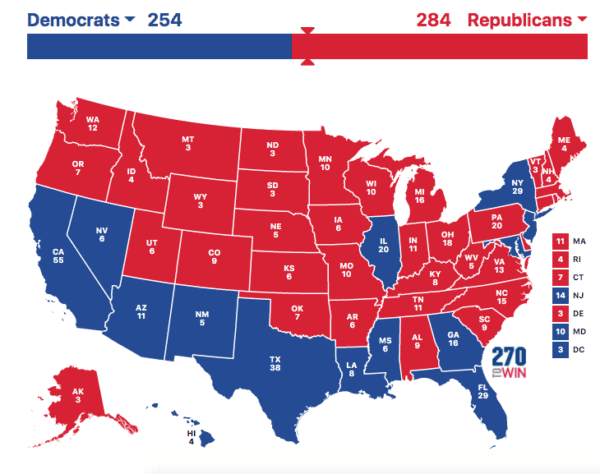
But if it were to win only those states that are 75 percent or more white, it loses:
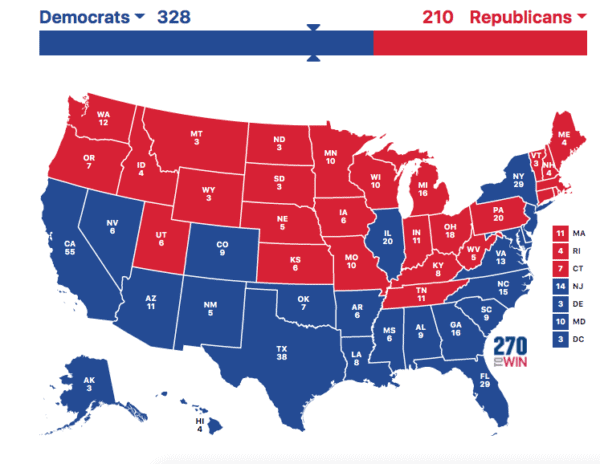
A split in the Democrat Party would change the electoral map. If a “woke” candidate, such as Elizabeth Warren, went independent, the Democrats would retain most of their base, but lose their most radical supporters, largely concentrated in New England and on the Pacific Coast. The election results might look like this:
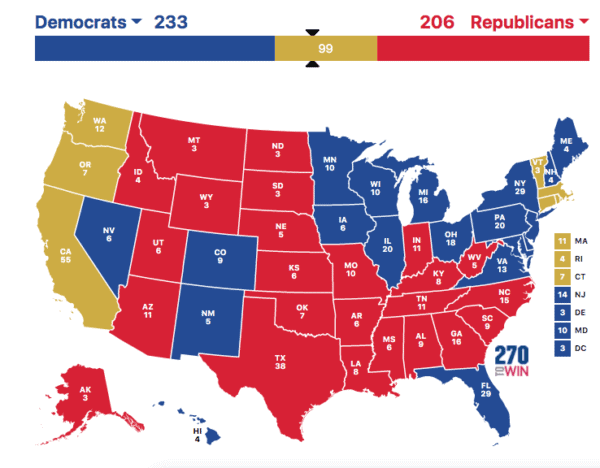
Unless the GOP were able to take advantage of the split to win several midwestern states, Virginia, and/or Florida, no candidate would win the 270 electoral college votes needed for the presidency, and congress would have to decide the outcome.
Some white advocates imagine that Hispanics will break off from the Democrats and form their own, leftist-identitarian party. Usually, it is assumed this party would dominate the southwest but nowhere else, which would almost guarantee that congress would pick the winner:
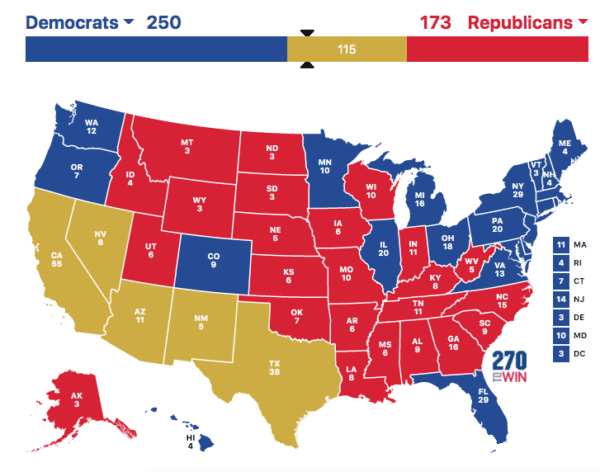
However, it would be more likely that the split in leftist votes between the Democrats and a new Hispanic Party would keep Texas and Arizona red. Meanwhile, Democrats would have to campaign hard in Illinois and New York, both of which have large Hispanic populations and Democrat supermajorities, to keep them in their column. The results, with “toss-ups” in brown, might look like this:

Once again, a GOP victory would depend on winning several midwestern states, Virginia, and/or Florida.
If an independent populist candidate ran a competent, well financed third-party campaign, the outcome would be very hard to predict. He would probably win the states that Bernie Sanders won in 2016 and 2020, along with states that have historically backed independent candidates such as Ross Perot and the populists of the 1880s-1920s. Those states are in yellow; toss-ups are in brown:
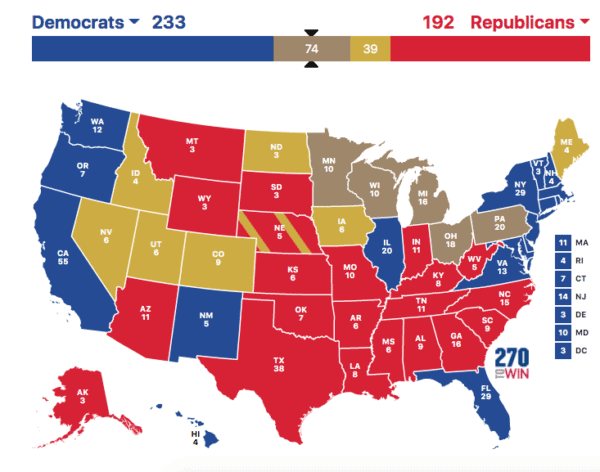
If this candidate championed poor factory workers and farmers, he would be competitive in the Midwest, the plains states, the Rocky Mountain West, and several other states, such as West Virginia and New Hampshire. Or, he could champion immigrants and the working poor while appealing to the most radical Democrats. That would make him competitive on the Pacific Coast and in large cities such as New York and Boston — but at the expense of the heartland. No candidate could do both.
All of these scenarios have one thing in common: The GOP has to win more white votes in the Midwest. If Republicans can make that region as red as the South, they can win whether the Democrat Party fractures or not, and no matter what third party emerges. But if the Midwest stays as blue as it was in the 2000s, the GOP will go the way of the Whigs.















